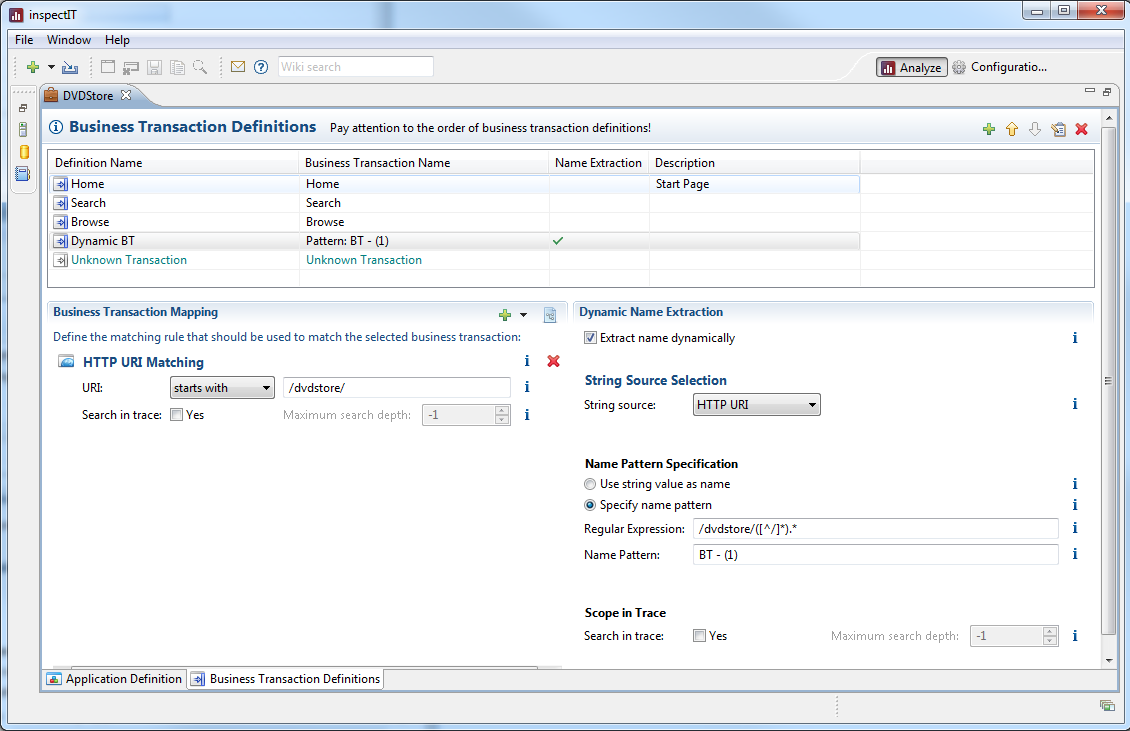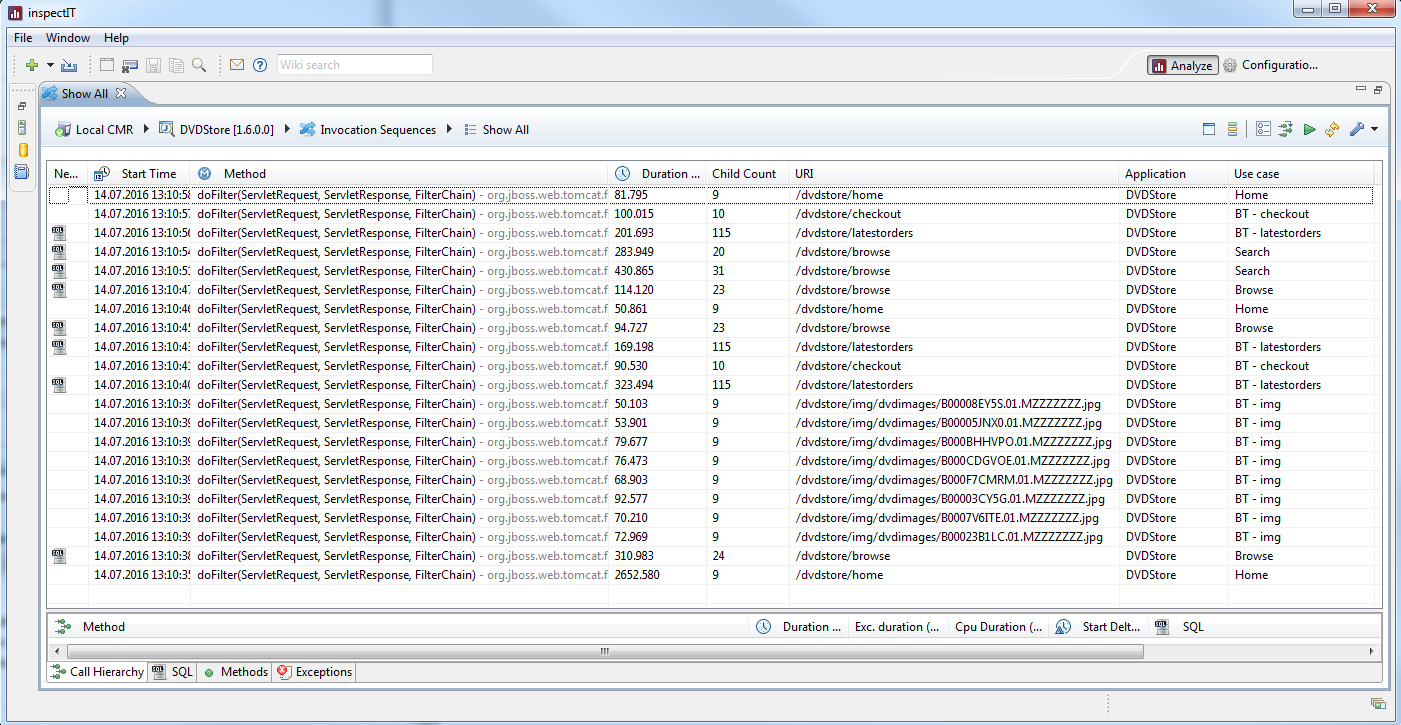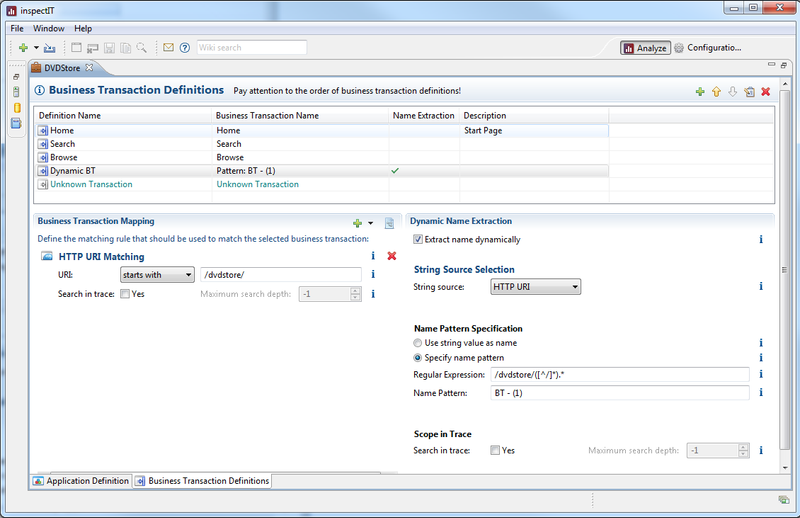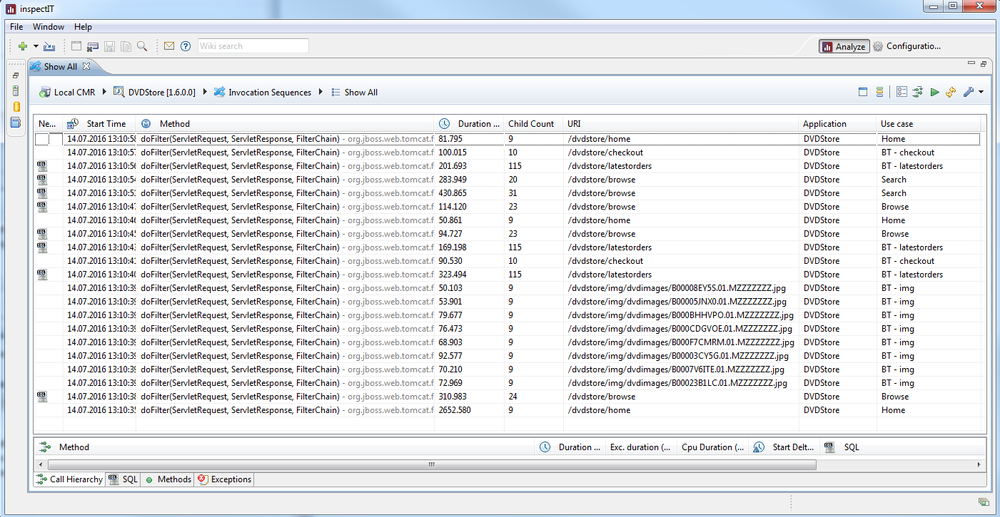...
The Order of Business Transaction Definitions
| Anchor | ||||
|---|---|---|---|---|
|
...
To correct this, Search needs to be moved above Browse as it is more specific than browse. To move business transaction definitions use the up and
Dynamic Name Extraction
| Anchor | ||||
|---|---|---|---|---|
|
Result of defining business Transactions
Apart from assigning static business transaction names to user requests (by means of matching rules), inspectIT provides the possibility to extract business transacation names dynamically from measurement data. To activate dynamic name extraction just enable the checkbox "Extract name dynamically" in the Dynamic Name Extraction section.
| Warning |
|---|
During evaluation of requests the dynamic name extraction is only applied if the left-hand side rules (Business Transaction Mapping section) match the request. |
The dynamic name extraction configuration provides the following properties:
- String Source Selection
This paragraph allows to select the string source from which the business transaction name shall be extracted. Available options are:- HTTP URI
- HTTP Parameter
- HTTP Request Method
- Method Signature
- Method Parameter
- IP
- Name Pattern Specification
This paragraph specifies how the business transaction name shall be extracted from the selected string source.- Use string value as name: If selected, then the selected string source is directly used as the name for the business transaction
- Specify name pattern: If selected, parts of the string source can be extracted and used in a custom name pattern.
- Regular Expression: Specifies a regular expression using one or more groups "(...)" to extract fragments from the string source.
- Name Pattern: Defines the target pattern for the business transaction name using the fragments previously extracted with the regular expression.
- Scope in Trace
This paragraph specifies how deep inspectIT should investigate the call graph of an request until the dynamic name extraction is applied. If disabled, inspectIT investigates only the root node of the call tree. If activated, the Maximum search depth defines how deep to search for a match (-1 means unlimited depth).
If the dynamic name extraction cannot be applied within the specified scope in the call tree of the request, then the corresponding request is marked with a generic business transaction name ("<Name Pattern> (unmapped)").
In the above example the business transaction name is extracted from the HTTP URI. In particular, the first path section after "/dvdstore/" is used as a fragment. This fragment is then used in the name pattern by referencing the first extraction group "... (1)".
Once the business transactions are defined, they are displayed in the Invocation Sequence view. In the example below we see the static definitions (Home, Browse and Search) as well as the dynamically extracted business transactions (BT - XXXXX):










